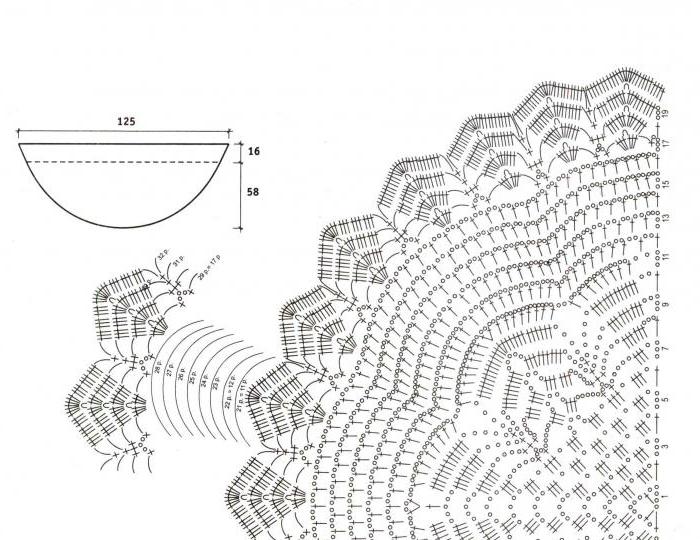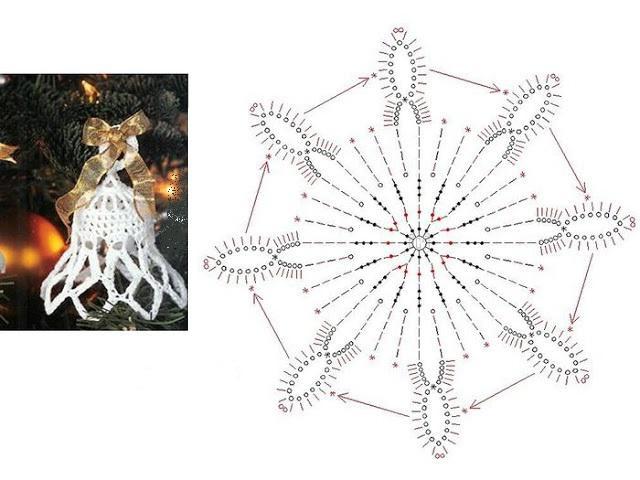Openwork kerchief (hook): diagram, photo, description
In hot summer days it is absolutely necessaryobserve safety precautions and protect your head from direct sunlight. This recommendation is relevant for both adults and children. For protection are suitable any hats: panamas, hats, bandanas and scarves.

For lovers of knitting is a great chanceto show their abilities. They themselves and their babies will need an openwork kerchief (hook). The scheme for manufacturing a simple product and tips for yarns are presented below.
Of what to knit
Obviously, the thickness of the yarn used should not bebe great, yarn from a long thread of 400-500 m / 100 grams is best suited. In this case, the material consumption will be small, and the fabric will come out very thin and light.
As for the composition of the yarn, here is the answerunambiguous: only natural fibers. The cotton or linen scarf (hook) will do its best with its functions. The scheme of almost any openwork pattern will allow you to tie a beautiful canvas.

Many beginning knitters think that acrylic,which is so similar to cotton, has the same properties. This is completely untrue: artificial materials do not pass air, cause intense sweating and can lead to allergies. Even if the cloth of the scarf is tied with a very delicate, the product can still be hot.
Crown hook: diagram and description
For experienced craftsmen, the creation of such a product is notrepresents labor. However, if a knitter who is crocheted with "you" takes work, she will need a description of how crochet knitting, patterns and instructions are going on.

Below is the algorithm for manufacturing universal size kerchiefs (it is suitable for adults and children):
- Crochet knitting: Carry out a chain of five air loops (VP) and knit a narrow long stripe with crochet stitches (STN). When its length reaches 65-70 cm, stop working.
- Directly a scarf (hook). The diagram illustrates the method of joining two parts of the product: the triangle begins to knit on the side of the belt. In order for the cloth of the scarf to be located clearly in the middle of the belt, you should mark its center and observe symmetry in the work.
- The pattern consists in the alternation of "bush" of four STN and three EPs.

How is the bevel
The sequence of knitting a triangle:
1st row: 3VP, 3StN, * 3VP, 4StN *. Repeat from * to * 5 times.
2nd row: 3 connecting bars (to move to the next cell), 3 VP, 3STN, * 3VP, 4STN *, repeat 4 times.
Next, you need to perform the actions described in the second paragraph, until there is only one "bush" left.
Do we need a harness?
This completes the work. If desired, the craftsman can tie a kerchief with one or several rows of columns without a crochet, but you will have to observe the rules for the formation of corners: on the ledges you need to tie 3StBN from the highest point, and in the valleys - perform 3StBN with a common apex. The value of the strapping is that then you get a denser kerchief (hook). The scheme does not provide for this stage, but experienced masters recommend binding (to strengthen) all the open edges of any product.
</ p>




